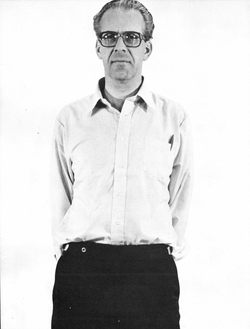1962 ⟶ Scorpius X-1: First Cosmic X-ray Source Discovered
Riccardo Giacconi and his team discover the first cosmic x-r...Year
1962
1963
1967
1970
1972
1983
🔭 Scorpius X-1: First Cosmic X-ray Source Discovered
Riccardo Giacconi and his team discover the first cosmic x-ray source, Scorpius X-1⟶

AstronomyAstrophysicsX-ray AstronomyCosmic X-raysScorpius X-1Space-based ObservatoriesHigh-energy Astrophysics
 United States
United States🌌 Quasars Identified as Distant Active Galaxies
Dutch-American astronomer Maarten Schmidt measures the spectra of quasars, the mysterious star-like radio sources discovered in 1960. He establishes that quasars are active galaxies, and among the most distant objects in the universe.⟶

AstronomyAstrophysicsQuasarsActive GalaxiesCosmologyRedshiftMaarten Schmidt
 Netherlands
Netherlands United States
United States💥 Discovery of the First Gamma-Ray Burst
Vela nuclear test detection satellites discover the first gamma-ray burst⟶

AstronomyGamma-Ray BurstVela SatellitesNuclear Test DetectionAstrophysics1960sHigh-Energy Astrophysics
 United States
United States🔭 Launch of the Uhuru Satellite for X-ray Astronomy
The Uhuru satellite, designed to map the sky at X-ray wavelengths, is launched by NASA. The existence of X-rays from the Sun and a few other stars has already been found using rocket-launched experiments, but Uhuru charts more than 300 X-ray sources, including several possible black holes.⟶

AstronomyX-ray AstronomySatelliteNASAAstrophysicsBlack HolesUhuru
 United States
United States⚫ Evidence of a Black Hole
Charles Thomas Bolton was the first astronomer to present irrefutable evidence of the existence of a black hole.⟶

AstronomyAstrophysicsBlack HoleCharles Thomas BoltonBinary Star SystemX-ray Astronomy1970s
 Canada
Canada🔭 Launch of the Infrared Astronomical Satellite (IRAS)
The first infrared astronomy satellite, IRAS, is launched. It must be cooled to extremely low temperatures with liquid helium, and it operates for only 300 days before the supply of helium is exhausted. During this time it completes an infrared survey of 98% of the sky.⟶

Infrared AstronomyIRASSpace-based ObservatoriesAstronomy1980sTelescopesAstrophysicsSpace Exploration
 United States
United States Netherlands
Netherlands United Kingdom
United Kingdom